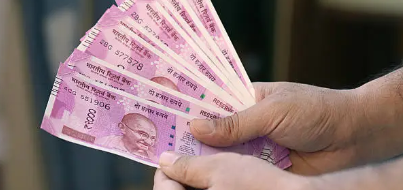
A significant update has emerged from the Reserve Bank of India (RBI). In its latest annual report, the RBI has officially confirmed that the printing of ₹2, ₹5, and ₹2000 denomination notes has been completely stopped. While these notes are still legal tender and can be used for transactions, no new notes of these denominations will be printed going forward.
The decision to stop printing ₹2000 notes is part of an ongoing process that began in May 2023, when the RBI announced the withdrawal of ₹2000 notes from circulation. According to the RBI’s data, 98.2% of all ₹2000 notes—worth ₹3.56 lakh crore in total—have already been returned to the banking system. This means only a very small portion of these notes remain in public circulation.
As for the ₹2 and ₹5 notes, they were primarily used for minor transactions. However, over time, coins of the same denominations have largely taken their place. The RBI notes a significant increase in the use of ₹2 and ₹5 coins in recent years.
In terms of currency currently in circulation, ₹500 notes dominate the Indian economy. These notes constitute 40.9% of the total number of notes and account for a staggering 86% of the total value. Following the ₹500 note, ₹10 notes are the most widely circulated, with a share of 16.4%. Smaller denominations like ₹10, ₹20, and ₹50 collectively make up 31.7% of all currency in circulation. This indicates that while ₹500 notes are preferred for larger transactions, ₹10 and ₹20 notes remain popular for everyday purchases.
The RBI has also pointed out a sharp rise in the cost of printing banknotes. In the financial year 2024–25, the cost of printing currency rose to ₹6,372.8 crore, up from ₹5,101.4 crore the previous year. This increase is attributed to the rising costs of paper, ink, and enhanced security features required in the banknotes.
On the security front, the RBI reported a decline in the number of counterfeit ₹10, ₹20, and ₹2000 notes. However, fake ₹200 and ₹500 notes are being detected more frequently, which is a cause for concern. The public is advised to remain cautious and alert while handling currency notes, especially those of higher denominations.
This development highlights the RBI’s evolving strategy in managing the country’s currency system—balancing cost, security, and practical usage.
Disclaimer:
This article is for informational purposes only and is based on the latest annual report released by the Reserve Bank of India. The content does not constitute financial or legal advice. Readers are advised to verify information through official RBI sources before making any financial decisions.




